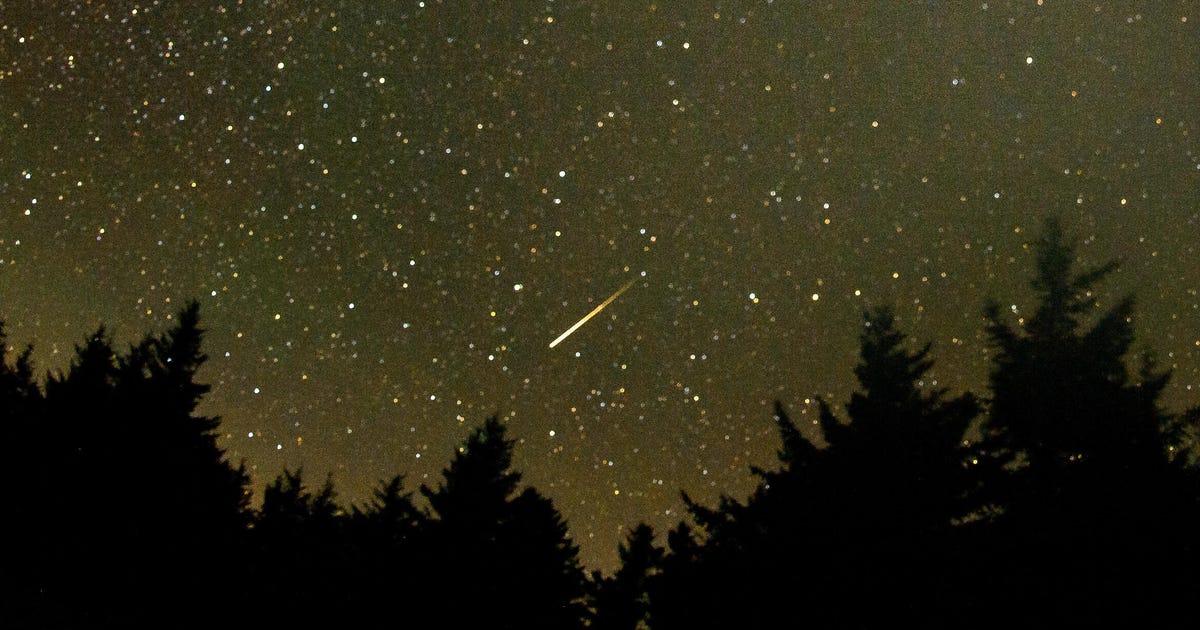
A Perseid meteor crosses the sky in 2016.
NASA/Bill IngallsOne of the best shows in the solar system is kicking into gear as the annual Perseid meteor shower lights up the night sky for 2021. We can thank large comet 109P/Swift-Tuttle for the little pieces of space debris that hit Earth's atmosphere and turn into the distinctive "shooting stars" of the meteor shower.
According to NASA, the Perseids will be active from July 14 through Aug. 24 with the peak coming in mid-August. The space agency says it's "considered the best meteor shower of the year."
The Perseids are popular for their reliability and the potential for spectacular fireballs. "The Perseids are one of the most plentiful showers (50 to 100 meteors seen per hour) and occur with warm summer nighttime weather, allowing sky watchers to easily view them," said NASA in a Perseids explainer geared for the Northern Hemisphere.
Fireballs happen when larger pieces of comet debris strike the atmosphere, creating long, bright streaks, the kind that make you say "Whoa!" Ready to get excited? Check out these photos from last year's shower:
2020 Perseid meteor shower photos shine bright in a dark year
See all photosCatch a shooting star
At its simplest, viewing the meteor shower is just about heading out at night and looking up, but there are some steps you can take to improve your chances at catching a good show. You're in luck if you're a super-early riser. The pre-dawn hours are a prime viewing time, but NASA also says you can see the meteors as early as 10 p.m. local time.
Some of the biggest obstacles to good meteor viewing are cloudy weather and light pollution. Aim for a clear night and try to get away from city lights. A hammock, blanket or a chair that leans back will save you from craning your neck. Give your eyes plenty of time to adjust to the darkness.
You can spot the meteors anywhere in the sky, though they get their name because they appear to be radiating from the constellation Perseus. To find Perseus, check out a stargazing app that will help you locate the constellation. Perseus isn't the actual source of the shower, but it can be helpful in tracking down the sometimes elusive streaks of light.
You don't have to wait for the mid-August peak to enjoy the action. A dark spot on a clear night can deliver a worthwhile viewing experience throughout the Perseids' visit. Catch those shooting stars while you can.
Follow CNET's 2021 Space Calendar to stay up to date with all the latest space news this year. You can even add it to your own Google Calendar.
Article From & Read More ( Perseid meteor shower 2021 on now: How to watch the celestial fireworks - CNET )https://ift.tt/3wIQ2Gy
Science
No comments:
Post a Comment